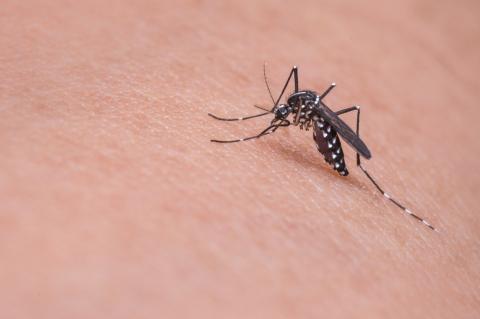Reducing the Risk of Mosquito Breeding on Farms

Public Health entomologists view “source reduction” as a significant tool in reducing risk from mosquito-spread diseases. This means limiting breeding opportunities for mosquitoes, especially for those species that pose a public health risk. Mosquitoes lay their eggs in or at the edge of water. Reducing the number of rainwater-holding containers around buildings (poorly adjusted gutters, bird baths, old tires, and other containers) can help reduce the risk from West Nile Virus and other mosquito-borne diseases. Theoretically, it could help for Zika virus vectors (Aedes albopictus and Aedes aegypti). Neither species is known to occur in New Hampshire, but the NH Division of Public Health Services is working with mosquito control professionals in New Hampshire to establish surveillance specifically for these species. Source reduction is not a very effective tool for managing Eastern Equine Encephalitis, since very few mosquitoes that spread EEE breed in containers. Of course, source reduction can significantly reduce the annoyance of mosquito biting.
Old tires left outdoors create ideal breeding sites for mosquitoes. Whatever position you leave them in… vertical, horizontal, at a slant… they catch rainwater. Putting them under cover eliminates that threat. Old tires are often used to hold down the ag plastic that covers feed bunker silos on dairy farms. One relatively easy way to reduce the mosquito risk is to cut or drill holes in the tire sidewalls. That’s somewhat easy for some tires, and difficult for others that have steel mesh inside. At the UNH Fairchild Dairy Teaching & Research Center, they buy tire sidewalls that already have holes cut in them. One advantage of them is that they stack very easily, compared to whole tires.
Old discarded plastic tarps and sheeting can also provide spots for water to pool in. I was surprised to find it happened in the plastic covering one of my wood piles. For my wood pile, I corrected this by laying plywood under the plastic (so it didn’t sag) and slanting it. Other solutions include putting the discarded plastic under cover, or taking it to the recycling center.
Plugged gutters on buildings are a common mosquito breeding site. Cleaning the gutter and/or adjusting the pitch allows proper drainage. Standing water with dead leaves or grass in it is highly attractive to egg-laying mosquitoes.
Piles of junked containers are prime spots for container-breeding mosquitoes. Solutions: remove the junk, or put the piles under cover or in storage, so rainwater doesn’t reach them.
Rain Barrels: Do you collect rainwater for your garden? That practice could generate lots of mosquitoes. Theoretically you could completely net the container, to keep any emerging mosquitoes from getting out (or to keep females from laying eggs). Depending on your setup, this might be pretty hard to do, and it can interfere with draining the water, if you don’t have a hose. Another alternative is to be sure that you completely empty the container(s) each week, before mosquito larvae can complete their development. That might be logistically difficult. Some garden centers sell mosquito “dunks” or “bits” which are designed to put a mosquito-pathogenic bacterium in the water. They can work, and can be used in containers (tires, unused pools, bird baths, rain barrels for the garden…) without a permit.
Manure lagoons: these can host lots of Eristalis flies (rat-tailed maggots), and some species of Culex mosquitoes. The Culex species in New Hampshire (like Culex pipiens, the rain barrel mosquito) bite birds, and very rarely bite mammals.
Water gardens: An outdoor water garden features one or more large containers into which you place aquatic plants. If there are no fish in them, they could create opportunities for mosquitoes to breed. Introducing fish into them can significantly reduce that risk. Most water gardens would not meet the state definition of “surface waters”, so you would not need a permit to use mosquito “dunks”.
Irrigation ponds and marshes: Yes, these are breeding sites for many species of mosquitoes, but we can’t do a lot about that. Theoretically we could treat them with insecticides or liquids that float to the surface and create a layer that prevents mosquito larvae from breathing. But, applying any pesticide to surface waters (there is a state regulatory definition for that) requires a permit from the NH Division of Pesticide Control, which can be a very long process.
Bird Bath: Dump the contents weekly, and clean the bird bath out. If you keep cleaning at this interval, mosquito larvae cannot mature to the adult stage, and they die when you dump them out onto the ground. If cleaning it out weekly is too much fuss for you, you can apply mosquito “bits” or “dunks” (biological insecticides based on the mosquito pathogen B.t.i.).
